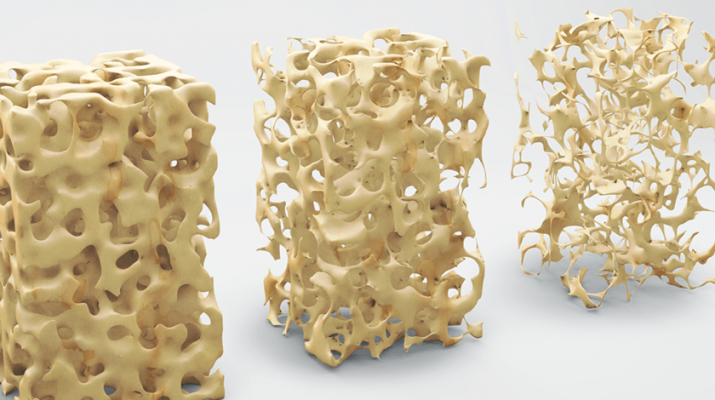Half of women 50 and older and 20% of men will break a bone because of osteoporosis at some point in their lives.
By Deborah Jeanne Sergeant
Numerous health organizations state that osteoporosis is widely under-diagnosed in older adults. Among them is the National Osteoporosis Foundation, which stated recently that it is “often left undiagnosed and untreated” despite its devastating consequences.
The foundation stated that breaking a hip often contributes to overall decline in health and physical condition and increases an elderly person’s risk of greater frailty, losing independence and living in a long-term care facility.
Half of women 50 and older and 20% of men will break a bone because of osteoporosis at some point in their lives.
Women are at greater risk for osteoporosis. Because its effects aren’t often recognized until a bone break occurs, few think to screen for it.
A woman’s risk of breaking her hip equals her combined risk of breast, uterine and ovarian cancer, according to the National Osteoporosis Foundation.
So why are older women more prone to osteoporosis than men?
For one thing, women’s bones tend to be smaller and thinner. For this reason, Asian women have a higher risk of osteoporosis, as do those of any race with smaller-sized frames.
Lifestyle factors that disrupt nutrient absorption or weaken bones include lack of exercise, smoking, excessive alcohol and carbonated beverages. Medical issues include bulimia, anorexia, celiac disease, chemotherapy and use of medication such as steroids and anti-seizure medication.
Once women hit menopause, the decline in bone-protecting estrogen declines, making them more prone to a broken bone, according to Jill Chodak, registered dietitian at the Center for Community Health & Prevention of the University of Rochester Medical Center.
Fortunately, women can do quite a bit to prevent bone loss.
Chodak said that many women know about calcium, found readily in dairy, spinach, broccoli, dried beans and salmon. But other key nutrients affect bone strength, including vitamin D.
“Most of us are deficient living in the North,” she said.
The body naturally generates vitamin D, a pre-hormone, when skin is exposed to sunlight. Just 10 to 15 minutes’ sun exposure twice a week suffices; however, Upstate New York doesn’t receive sufficient sunlight for several months of the year. That means deficiency is inevitable without supplementation. Eggs and oily fish varieties like salmon contain vitamin D. Few other foods naturally contain vitamin D, though commercially sold milk is fortified with it, as are many foods like breakfast cereal.
While buying a bottle of vitamin D supplement tablets seems a good solution, Chodak said that it’s better to have vitamin D levels checked to ensure the proper amount is taken.
“Phosphorus is another item that’s found in dairy and we usually consume enough,” she said.

